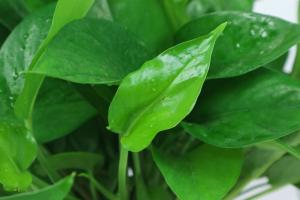How Soon to Water Desert Plants After Rain
Introduction
Desert plants have evolved to survive in harsh conditions where water is scarce. They have developed various mechanisms that help them conserve water and thrive in arid environments. However, when it does rain in the desert, the question of when to water these plants becomes crucial. In this article, we will discuss how soon you should water desert plants after rain.
The Importance of Timing
Timing is critical when it comes to watering desert plants after rain. These plants have adapted to store water in their tissues and roots to use when there is a shortage. If you water them too soon after rain, you risk overwatering and damaging the plant roots. However, if you wait too long, the plants may not get enough water to replenish their reserves, which can stunt their growth and cause them to dry out.
Factors to Consider
Several factors determine how soon you should water desert plants after rain. These include the type of plant, the soil type and moisture level, the weather conditions and the location. Some plants may tolerate wetter soil better than others, while others may require more time to absorb the water. Soil that drains quickly will need more frequent watering, while dense soil may retain moisture longer. In addition, the weather conditions and location can also affect how soon you should water. For example, if the weather is hot and dry, or the location is windy, you may need to water sooner than if the weather is cooler and more humid.
Guidelines for Watering Desert Plants After Rain
When it comes to watering desert plants after rain, there are some general guidelines that you can follow to ensure you do it at the right time. Firstly, wait for the soil to dry out a bit before watering. You can check this by using a moisture meter or by digging a small hole in the soil to see if it's dry below the surface. Secondly, check the weather forecast to see if there is more rain expected. If there is, you may be able to wait longer before watering. Thirdly, observe the plants and look for signs that they need water, such as wilting or yellowing leaves. If you see these signs, it's time to water, even if it hasn't been long since the last rain. Lastly, water slowly and deeply to ensure the water reaches the plant roots and doesn't evaporate too quickly.
Conclusion
Knowing when to water desert plants after rain is essential for their survival. By understanding the factors that affect watering and following the guidelines for timing, you can ensure that your plants get the right amount of water to thrive in their arid environment. Remember to observe the plants, check the weather and soil moisture levels, and water slowly and deeply to help them conserve water and grow strong.

 how many times do yo...
how many times do yo... how many planted tre...
how many planted tre... how many pine trees ...
how many pine trees ... how many pecan trees...
how many pecan trees... how many plants comp...
how many plants comp... how many plants can ...
how many plants can ... how many plants and ...
how many plants and ... how many pepper plan...
how many pepper plan...
































